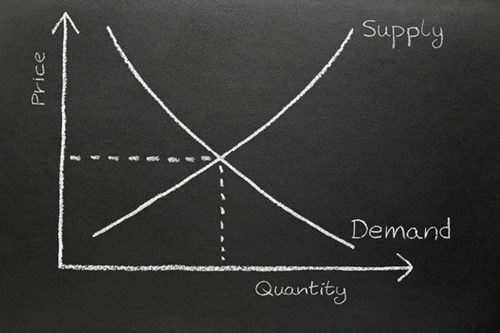
This article originally appeared in the Business Brief supplement of the Guernsey Press.
“An economist is an expert who will know tomorrow why the things he predicted yesterday didn't happen today.” Laurence J. Peter
Investors can be forgiven for falling into the trap of becoming distracted by all the noise coming from the financial press. It is important to remember that markets are forward-looking mechanisms and often a change in sentiment can create compelling opportunities. Helping us navigate these unpredictable settings are company valuations: when they look cheap, relative to the future stream of cash inflows we expect to receive, we buy and when they become stretched, we sell. To zig when everyone else is zagging is a simple (but sometimes lonely) approach that can lead us to take contrarian positions. We have often found these to generate market-beating returns over time. There is one catch though, and it’s an important one: the approach isn’t guaranteed so we must weigh the chances of success in our favour. So, how do we do this?
On the Global Blue Chip team, we focus our attention on the factors that remain within our control – the quality of the businesses we own and the prices we are prepared to pay for exposure to these. We know that a relentless dedication to getting these aspects right will hopefully deliver on our objective of achieving exceptional (or at least above average) returns for our investors.
Recently, the murmurings that this way of investing is no longer relevant have been growing louder and as vigilant investors, we understand the need to be aware of geopolitical and macroeconomic events. However, we have yet to be convinced that abandoning our fundamental approach, which leads us to invest in some of the world’s most coveted businesses, is the rational course of action.
Ironically, one can use the basic economic notion of supply and demand to explain why quality businesses are better prepared to weather whatever the markets have in store over the years ahead (without needing to make a prediction about what this may be).


For most goods, demand is inversely correlated to price. In other words, as prices rise, the quantity demanded falls and vice versa. We can divide the percentage change in quantity demanded by the percentage change in price to determine the price elasticity of demand, which tells us how sensitive demand is relative to the change in price. Where the percentage change in price is equal (but opposite) to the percentage change in demand the good is described as unit elastic. For such goods, any increase in revenue attributable to a price rise is perfectly offset by a simultaneous reduction in demand.
Commodity goods (which are easily substituted for other, similar products) should exhibit higher price elasticity than goods which possess unique qualities (where alternatives are not readily available). Assuming the price elasticity is smaller than -1, businesses can pass costs onto the consumer as required (in order to better maintain margins and profitability) without a fall in demand sufficient enough to completely offset the additional revenue from the price increases implemented. In other words, such businesses possess pricing power.
This is a trait that is desirable in all manner of markets but becomes even more pressing during periods where the propensity to consume diminishes (due, perhaps, to the increased incentive to save as interest rates rise or the real income drops due to increased levels of inflation) and the effect is exaggerated. Navigating the market with a portfolio consisting of quality businesses is comparable to trying to cross an ocean in a big stable ship with a powerful engine. A portfolio built on highly cyclical and often low-quality companies is akin to attempting the same journey in a rubber ring - ebbing and flowing with the tide with a high chance of catastrophe!
One example of the benefits associated with owning a quality business comes from Starbucks' recent earnings call. In the interest of being transparent, we do not own Starbucks on valuation grounds (it’s too expensive by our estimates and does not offer us a suitable margin of safety) but the company is within our investable universe and we are familiar with its business.
The brand needs no introduction; coffee is a commoditised good and whilst the drink itself varies in flavour (depending on the variety of beans and roasting technique) it is replicable. This would make it difficult for most coffee businesses to charge significantly more for their coffee than the competitors. However, Starbucks has introduced what it terms beverage “modifiers” which enable its customers to fully customise their drink with proprietary syrups, foams and milk variants. These modifiers turn a commoditised product into a unique beverage (with over 170,000 combinations) that cannot be substituted elsewhere. This enabled the company to increase comparable store sales by 5% year-over-year (driven by a 7% hike in average ticket prices and a 2% reduction in demand) in a market where its competitors are having to discount heavily in order to retain cost-conscious customers.
We hope you are as enthused about investing in quality businesses as we are! If you would like to know more about the Global Blue Chip Strategy (with solutions available from £5,000) or the other investment opportunities we have at Ravenscroft please don’t hesitate to get in touch with one of the team.

